After the Soviet Buran (БУРАН) program was suspended in the late 1980s, the Buran space shuttle was housed in a hangar at Baikonur. That hanger unfortunately collapsed due to structural failure in 2002, destroying the spacecraft. A clear-out of the site began a few years ago, with the parts and equipment being sold off to private collectors and resellers.
Unfortunately I couldn't afford any of the intact space suits up for auction (I can only dream), but I did manage to get hold of a temperature gauge that has actually been to space, and that's cool enough for me.
Here are some photos:
Taking the metal shroud off reveals the following labelling:
An automated translation suggests that 750uA is the "Inom", which I presume means nominal current. The text at the bottom translates to "Made in USSR". The part number at the top appears to be ЭА0624, a search for which returns similar-looking DC ammeters from the Soviet era. It seems likely to me that this is a microammeter part that was repurposed as a temperature dial for the space program.
The dial moves freely and smoothly if the unit is bumped. Looking into the front glass, over the top of the plate with the markings, I can see coil windings that look like the sort of thing you'd typically see in an ammeter. Unfortunately I couldn't get a useful photo even with a microscope.
I connected a 5V source to it with a 10kΩ resistor in series, but it does nothing. Measuring across the terminals with a multimeter in resistance mode, I get an open circuit. I suspect that that it is damaged internally, since I can't think of a way in which an ammeter would appear as an open circuit.
Can anyone offer some insight into how these types of microammeter gauges are typically constructed, and what likely failures I should look for in the process of restoring this one, other than the obvious "the wire broke off the contact inside"? It wouldn't surprise me if the building collapsing on top of it knocked something loose, and that's the totality of the failure here, but I'd really like to be as careful and thorough as possible in my restoration.
Finally - and I know this is a long shot, and borderline off-topic here - does anyone have any ideas what kind of potting compound might've been used to seal this thing, and how I might remove it without damaging the plastic housing? The compound is white, hard, and cracks/crumbles when poked at with a scalpel.
I'd really like to do right by this little piece of space history and get it working again. Any help would be much appreciated.


